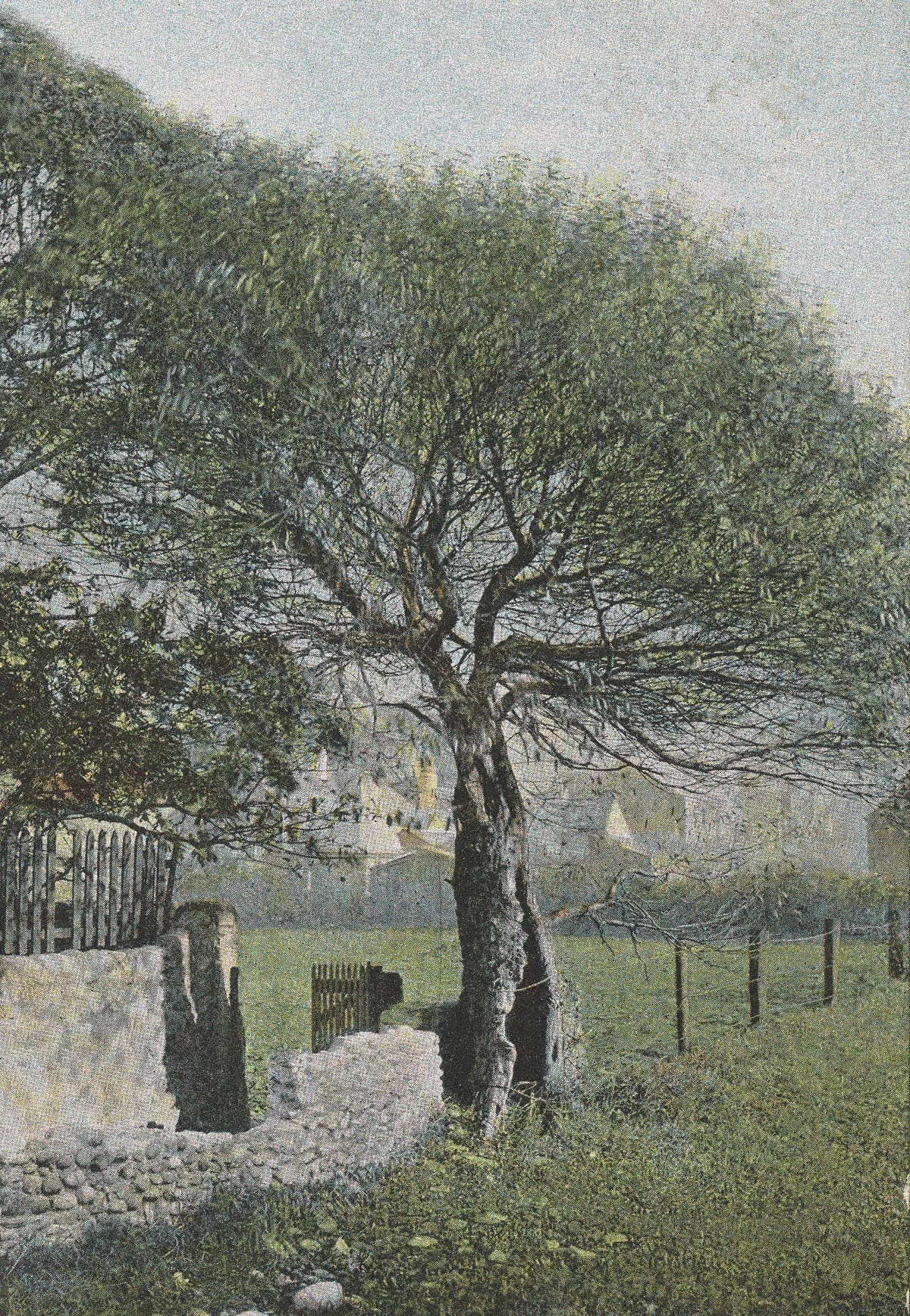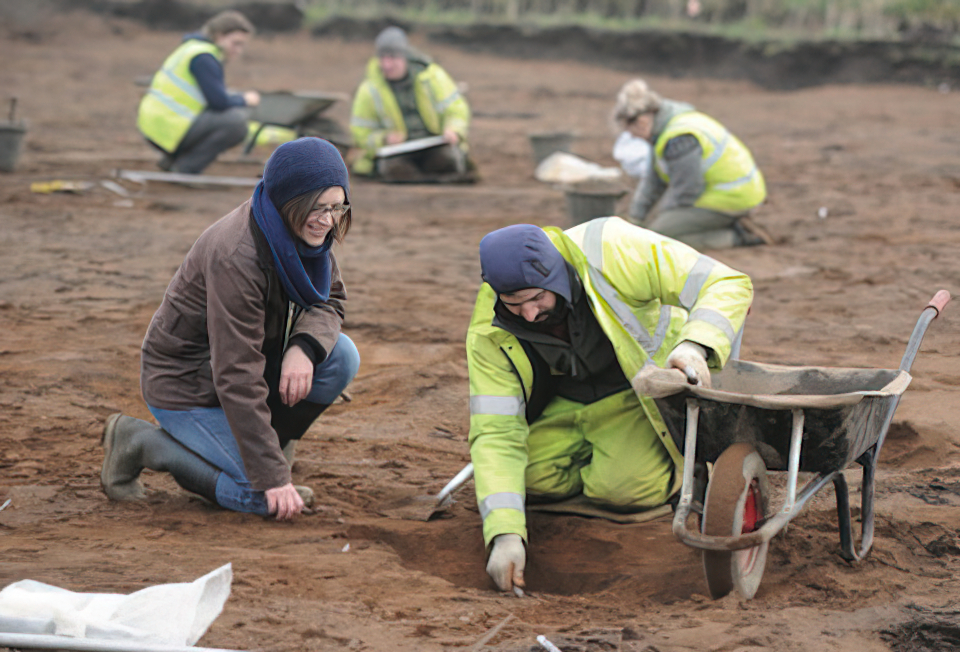

Archaeological remains were discovered in 2016 during the construction of new playing fields at the top of the raised beach adjacent to Carnoustie High School.
GUARD archaeology was subsequently commissioned by Angus Council to carry out an archaeological excavation to fully investigate the archaeological remains and recover all artefacts before the development of the site.
It quickly became apparent that prehistoric features (pits and potholes) were present across much of the site. Aerial photographs showed that the remains represented several buildings. They had discovered a settlement site.
The structures were predominantly oval or circular with the addition of rectangular structures. Some recovered artefacts suggested at least two phases of activity, namely from the Neolithic and Bronze Age periods. These timber buildings were constructed from large posts set in the ground in postholes which supported the roof with wattle and clay walls. The halls were rectangular structures with rounded gable ends, doorways and partitions for rooms where different activities were done.
The largest of these buildings at Carnoustie was a timber hall that was over 35 metres in length and may well have been the home of the leading clan of the area at the beginning of the fourth millennia BC. There was sufficient space at one end for an extended family or group, space in the middle for cooking and space at the other end for storing grain, cattle and sheep or goats.
This Neolithic Hall is the longest and largest structure ever found in Scotland.
All the recovered artefacts, known as the “Carnoustie Hoard” comprise mainly of stone tools and pottery shards, were examined by specialists to identify from which periods they dated and what were their functions. Together with radiocarbon dating, this information can be compared with assemblages of artefacts from across Scotland to obtain a fuller picture of the significance of the Carnoustie site.

This was originally known as The Point.
The car park behind the Burgh Chambers is the site of the Point Inn, where Tammas Lousen stopped for a drink one evening while walking home to Barry where he lived at the time. He didn’t make it home that night and slept on the links nearby. He later bought the land and became the first resident of what became Carnoustie.
The Burgh Chambers on the corner of Lochty Street was designed by James Prain Bruce and built in 1898. He was also the designer of the War Memorial and many large private residences around town.
At the time, the Burgh Chambers was criticised as ‘a riotous extravagance’.